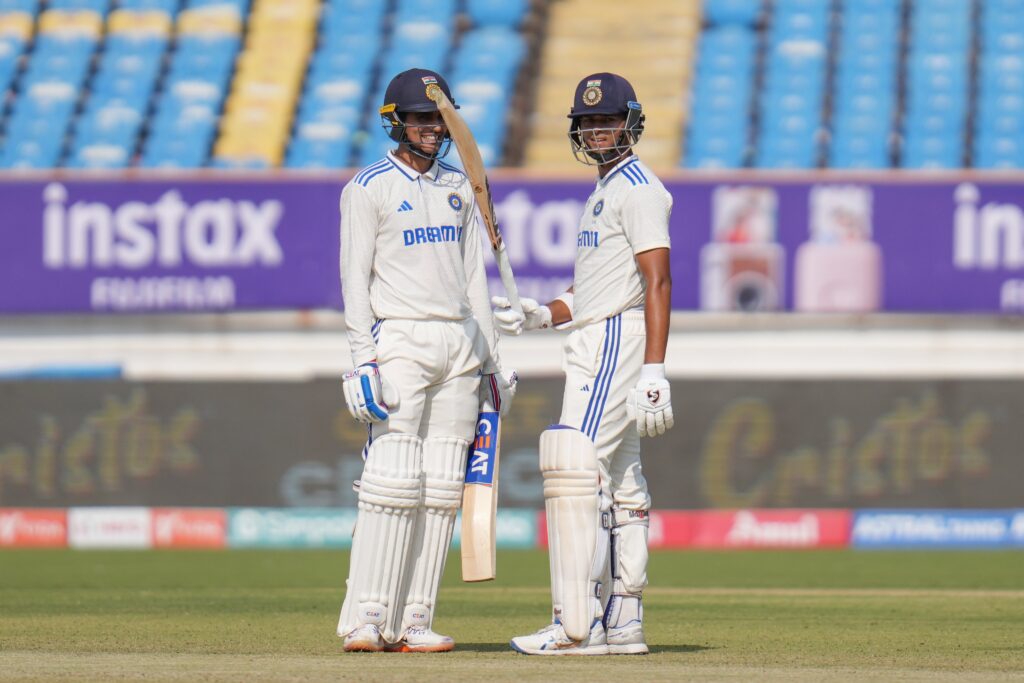
Big scores in the second innings are sometimes rated more valuable than those in the first. In theory, there shouldn’t be any difference. Runs in Test cricket are important, regardless of when they are made.
However, cricket at times rates second-innings contributions as more precious. That’s because, in most cases, they come on a deteriorating pitch and when the pressure to perform is greater. Unless it’s a one-sided match, outcomes are sometimes determined on how a team fares in the second dig. Before flying home for a family emergency, Ravichandran Ashwin had said that the third Test between India and England will be decided on the third innings — India’s second.
Thanks to Yashasvi Jaiswal and Shubman Gill, India have taken a big step towards that goal of putting up a sizeable total. The job isn’t done yet, but they have put India on course of batting England out of the match. One can say that a lead of 126 was good enough. But then, didn’t India lose the first Test after taking a lead of 191? So, it’s important to bat big once again.
This should do Jaiswal a world of good. All his big scores before this one — 209, 171, 80, 57 — had come in the first innings. Before retiring hurt in Rajkot, he was unbeaten on 104. He knows the importance of these runs, particularly because of England’s ability to chase. This should give him belief that he can contribute irrespective of the condition of the pitch and situation of the match.
Virender Sehwag averaged above 70 in the first innings and around 26 in the second. This didn’t make him a lesser player, but it was known that he was not the same force when it came to batting a second time. Sehwag himself rated his only second-innings century — a match-saving 151 against Australia in Adelaide in 2008 — as one of his best three-figure knocks.
Contributing in the second innings is not new as far as Gill is concerned. Five of his eight 50-plus scores came in either the third or fourth innings. In the unforgettable series win in Australia three years ago, he made 50 and 91 in Tests India drew and won. Both were in the fourth innings.
🚨 Stat Alert 🚨
For the first time in 8 inns, Yashasvi Jaiswal and Shubham Gill have managed a 100-run partnership…
On previous 7 occasions, they even failed to cross the 50-run mark!
Previous partnerships ⬇️
11, 4, 10, 8, 43, 49, 1📸 @BCCI #INDvsENG #TestCricket… pic.twitter.com/5q4cKqVAwL
— RevSportz (@RevSportz) February 17, 2024
However, out of form and pushed to the edge, he redeemed himself with a century in the second innings of the previous Test against England in Visakhapatnam. How crucial was that effort? Well, his 104 helped India win by 106 runs. It was effectively the difference between the teams.
Soon after that and a duck in the first innings in Rajkot, Gill produced another substantial effort (65 batting at stumps), which might go a long way in India consolidating their position. He, too, will realise the value of these runs and understand that special feeling of coming good the second time.
Among the traits which made VVS Laxman special was his ability to shoulder load in the second innings. That 281 apart, he made decisive runs in the second innings many times. But for a series of failures in his last eight Tests, in England and Australia, his second-innings average would have been 50-plus. Despite that, he averaged more than Sachin Tendulkar and Rahul Dravid batting second.
Youngsters doing this job in a phase of transition in Indian cricket is good news. Early on in their careers, Jaiswal and Gill will learn the importance of contributing in that crucial period of a Test match. Don’t forget, Tendulkar himself felt he had ticked a new box after anchoring India to a famous chase of 387 with his only fourth-innings century, against England in Chennai in 2008-09.
Also Read: In Ashwin’s Absence, Rohit and Wallball Set up Test for India



